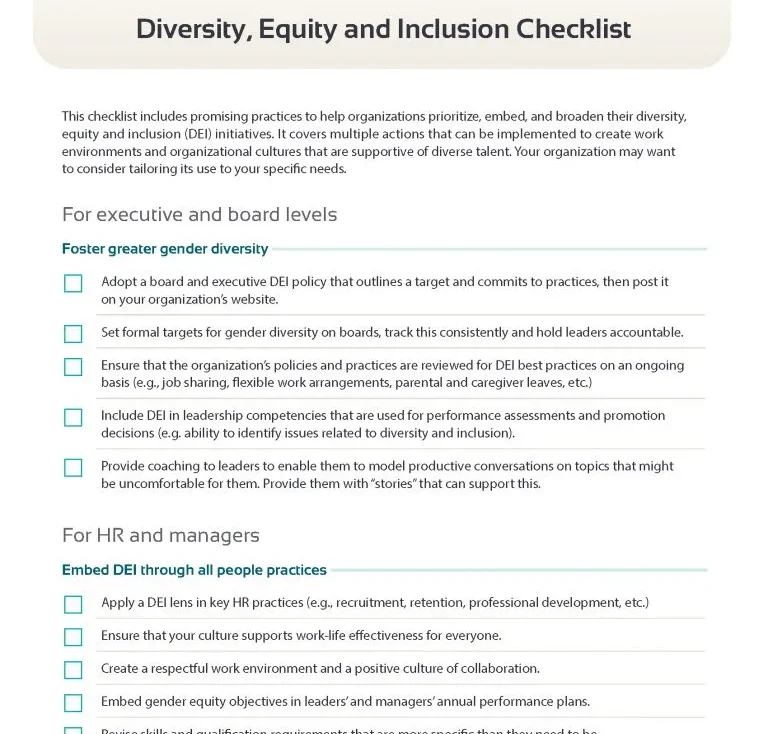- Complied with employment equity/human rights legislation.
- Focused mostly on “numbers” and increasing representation.
- Implemented an anti-harassment and discrimination policy and enforced practices.
Next, you should:
- Define the “why”: Articulate the benefits of IDEA for your business success, beyond your legal obligations.
- Create a vision: Highlight the importance of IDEA in your vision/mission/values, to signal internally and externally that it is integral to who you are and how you operate.
- Assess your current status: Gather baseline data on employee demographics and experiences to help identify where to focus efforts.
- Seek early wins: As foundational practices, consider respect in the workplace education, inclusive job titles and work terminology, and recruitment materials that welcome and reflect candidates from all backgrounds







